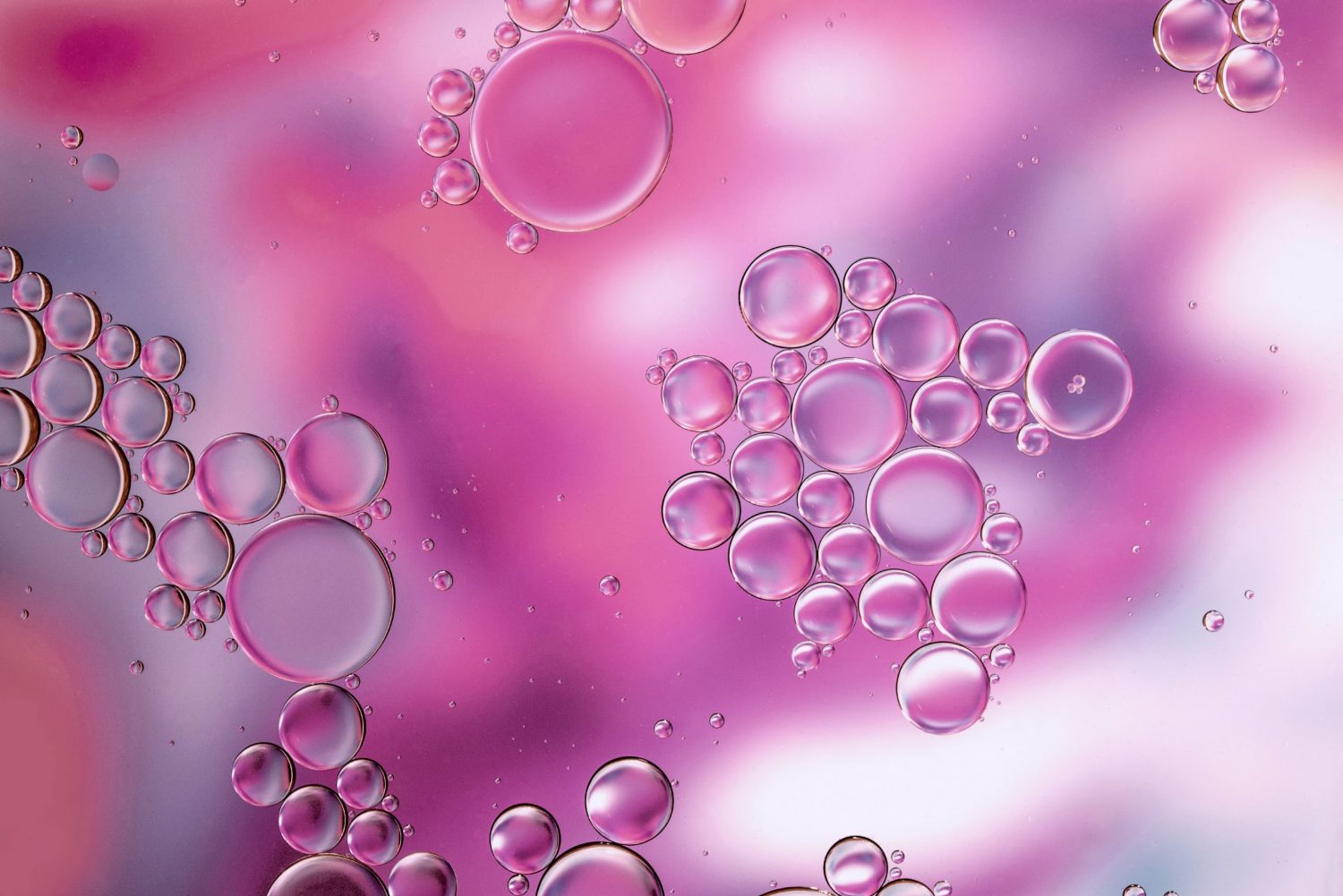
By now, you’ve probably heard the acronym ‘AHAs’ floating around the realm of skincare. But do you know what it represents and what it can do for your skin? Whether you’re unfamiliar with the term or wanting to further your knowledge of it, you’ve come to the right place. Today, we’re laying out exactly what the benefits of alpha hydroxy acids are for skin, how to incorporate them into your routine, and more! Intrigued? Then keep reading!
What are AHAs?
Alpha hydroxy acids (AHAs) are a group of exfoliating, water-soluble plant and animal-derived acids commonly found in skincare products such as toners, serums, creams, and even used in treatments. And while its skincare sister, Ms. BHA, only includes one acid, salicylic acid (which we’ll dive into another day), a total of six AHAs exist: glycolic, lactic, citric, malic, tartaric, and mandelic. However, the most popular and widely used AHAs are glycolic and lactic acid, the latter which we have a complete guide to. Now that you know what they are, let’s dive into the benefits of alpha hydroxy acids!
Benefits of AHAs
Exfoliate Skin
Ah, the most notable feature of AHAs. Exfoliation. They work hard to slough away at dead skin cells that’ve built up over time on the surface of our faces. And when these cells accumulate, they can make skin appear dull and dehydrated, so choosing the right AHA to tackle this issue is key, as not every AHA is created equally and will vary in strength depending on their concentration (more on that below). AHAs also pave the way for new skin cells to generate, leaving behind tighter, smoother, and brighter skin, which brings us to our next benefit.
Brighten Skin
Want people to be blinded by your bright complexion?
Then an AHA is what you need. When those accumulated skin cells are broken down and discarded of (good riddance), fresh, radiant skin is what’s left in its place. And the best AHA to achieve this is glycolic acid, as it helps to reveal the better-looking skin that’s beneath damaged surface-layer skin. This is thanks to its small molecular structure which allows glycolic acid to penetrate deeper layers of the skin pretty darn quickly.
Promote Collagen Production + Blood Flow
If you didn’t already know, our skin has a difficult time producing collagen as we grow older. The result? More wrinkles, age spots, and skin sagging. And while it’s physically impossible to alter our age, reversing the signs of skin aging isn’t as much of a far-fetched idea. When the outermost layer of our skin (the epidermis) is exfoliated, the middle layer, the dermis (the neighborhood Ms. Collagen resides in), is more easily penetrated. This allows for an AHA to destroy old collagen fibers and create new and improved ones when applied to the skin. Sound good? Well, here’s something to make it even better. AHAs also help promote blood flow to the skin thanks to their anti-inflammatory properties, making these acids go-to color correctors for those with dull complexions.
Treat and Prevent Acne + Minimize Hyperpigmentation
Instead of cutting off your zits like SpongeBob, try applying an AHA to help treat and prevent acne.
As mentioned earlier, AHAs are excellent exfoliators and help eliminate dead skin cell buildup, which we know can lead to acne, both non-inflammatory (such as blackheads) and inflammatory (such as pustules). And they don’t just loosen the bacteria and oil that’s gotten lodged inside your pores. AHAs can also help minimize the appearance of large pores and acne scars thanks to their rapid skin cell turnover rate. And if you have acne on your chest, shoulders, and back, AHAs (specifically mandelic acid) can be applied to those areas, too! It’s also important to keep in mind that acne scarring isn’t the only type of hyperpigmentation that exists.
Age spots, sunspots, and even common conditions such as melasma can cause skin to discolor. But because AHAs promote cell turnover, the appearance of hyperpigmented areas can become significantly reduced. If sun damage is your concern, try lactic or malic acid, both of which are suitable for treating discoloration and those with sensitive skin.
Increase Product Absorption
If your AHAs could talk, they’d say this to your other skincare products…
A neat fact about AHAs is that they can help other products work more efficiently. How? Let’s break it down easily. If you were to apply a face mask to skin that’s covered in makeup, chances are the mask wouldn’t be able to effectively penetrate the layers of skin and achieve what it’s meant to. The same can be applied to AHAs. If you’re wondering why your favorite facial cream isn’t providing the hydration it promises, there’s a good chance it’s because it isn’t able to properly work its way into your skin thanks to the buildup of oil, bacteria, and dead skin cells resting on the surface.
But an AHA can solve this issue. Simply put, AHAs pave the way for other products to do their thang properly and successfully.
Side Effects of AHAs
Alright, so people hear the term “acid” and automatically think that it’ll do this to your skin once applied…
And if that did happen, it’d be a temporary reaction. And the same goes for any itching, redness, blistering, and/or dryness. BUT the best way to minimize the chance of any of these happening is to test-patch any AHA prior to routine use. Remember, the safest areas to do this are under your jawline or the side of your neck.
Overall strength of a product is key too, so when it comes to AHAs, look for concentrations between 5 and 10 percent. Anything above that is risky, so stay in the safe and slow lane instead of speeding onto the skincare highway and risking a crash on your complexion. Also keep in mind that using an AHA on skin that’s already broken and/or irritated or an area that’s affected by a pre-existing skin condition such as rosacea, eczema, or psoriasis, can cause an adverse reaction, so consulting a dermatologist is always best if you’re unsure if an AHA is right for you. And lastly, AHAs may make your skin more UV-sensitive (and for up to one week after initial use), so if you’re a first-time AHA user, applying it at night may be the way to go to prevent any undesirable side effects.
And that’s a wrap, folks! We know that just like the Sanderson sisters, many of us have the desire to look more youthful.
And if youthful, smoother, even-toned skin is what you desire, consider adding an AHA product into your beauty routine. It certainly won’t be a bunch of hocus pocus. We hope you enjoyed learning the benefits of alpha hydroxy acids and look forward to when we cover Queen B…HA next!

